|
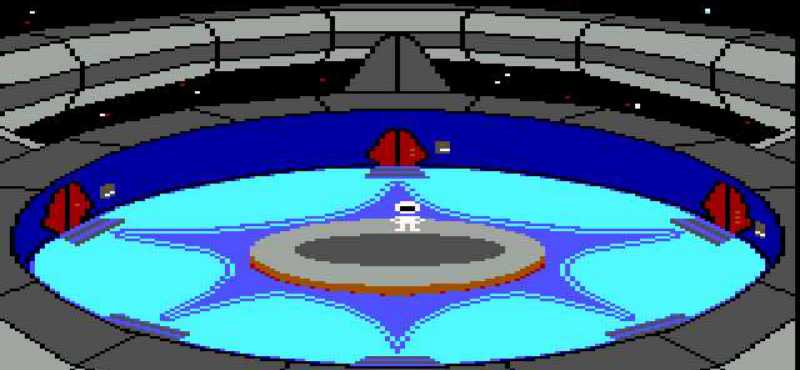 What
is Starflight? In the simplest definition Starflight is a computer game
for the IBM PC developed by Binary Systems which started development in 1983,
and was released in 1986 "after 15 man years" for the cutting edge video technologies of the time,
namely black-and-white, Hercules monochrome, composite TV, 4-color CGA, and 16
color Tandy graphics. Later a second version was released with EGA
graphics support and versions were ported to the C64, Amiga, Atari ST and the Sega
Ge What
is Starflight? In the simplest definition Starflight is a computer game
for the IBM PC developed by Binary Systems which started development in 1983,
and was released in 1986 "after 15 man years" for the cutting edge video technologies of the time,
namely black-and-white, Hercules monochrome, composite TV, 4-color CGA, and 16
color Tandy graphics. Later a second version was released with EGA
graphics support and versions were ported to the C64, Amiga, Atari ST and the Sega
Ge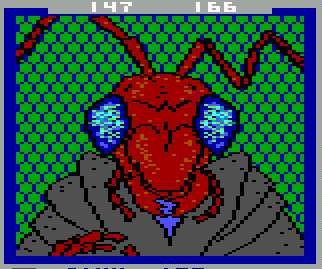 nesis platforms. Three years later two of the five original developers
went on to create the sequel Starflight 2: Trade Routes of the Cloud Nebula. nesis platforms. Three years later two of the five original developers
went on to create the sequel Starflight 2: Trade Routes of the Cloud Nebula.
But
still this doesn't answer the question of "What is Starflight?" Starflight
is an open ended space simulator of 269 star systems and roughly 800
planets. Is also a role-playing game considering your ships strengths are
improved as you spend resources on crew training, equipment purchases, and
obtain specialized artifacts. It is an adventure game set in space with a
sophisticated artificial intelligence system, alien races with distinctive
language traits, personalities, and behaviors. It is a simulator of a huge universe requiring
greater and greater amount of fuel to travel to distant locations. It
contains open-ended scripting with chains of hints leading players varied and different
conclusions about meanings and histories and events.
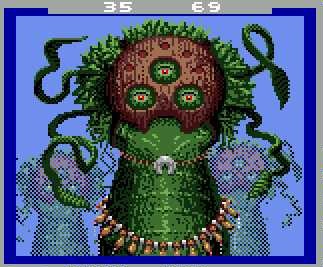 The game starts you off
in Starport, a torus shaped space station orbiting Arth, the last surviving
colony of the Old Empire and the only planet with any form of human life.
A thousand years ago a great empire spanned the stars combining almost all the
known alien races in a cooperative alliance a.k.a. Star Trek. Now after a great dark age, you command a spaceship built with the
the pinnacle of Old Empire technology and set out to explore the galaxy. Within a
short time your true mission begins to unfold as it is discovered that
not only Arth's sun, but all the stars in the region are systematically
exploding, vaporizing planetary ecosystems and slowly and methodically extinguishing all life in
the galaxy. The game starts you off
in Starport, a torus shaped space station orbiting Arth, the last surviving
colony of the Old Empire and the only planet with any form of human life.
A thousand years ago a great empire spanned the stars combining almost all the
known alien races in a cooperative alliance a.k.a. Star Trek. Now after a great dark age, you command a spaceship built with the
the pinnacle of Old Empire technology and set out to explore the galaxy. Within a
short time your true mission begins to unfold as it is discovered that
not only Arth's sun, but all the stars in the region are systematically
exploding, vaporizing planetary ecosystems and slowly and methodically extinguishing all life in
the galaxy. 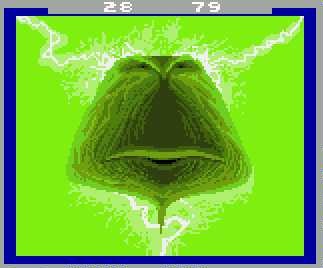 Actual gameplay consists initially of exploration and mining of
enormous fractal generated planetary surfaces, and later of alien diplomacy,
puzzle solving, and space combat. Money or "Resource Units" is
obtained by selling gathered minerals, captured lifeforms, or by salvaging the
mineral components of destroyed spaceships. Actual gameplay consists initially of exploration and mining of
enormous fractal generated planetary surfaces, and later of alien diplomacy,
puzzle solving, and space combat. Money or "Resource Units" is
obtained by selling gathered minerals, captured lifeforms, or by salvaging the
mineral components of destroyed spaceships.
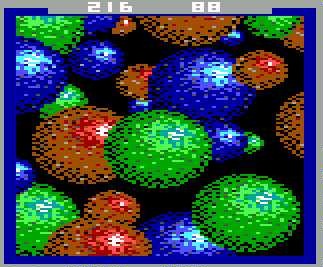 The attention to depth is
incredible. Alien races besides having different amounts of knowledge per
encounter will have an emotional index based on your actions towards them and
the way you respond to questions. They will scan your ship and vary
their responses based on your ship's strength relative to there's. Vast
planetary surfaces represented by a topology map scatter randomized mineral
deposits primarily on higher terrains and lifeforms in lower regions. Your
vehicle requires different amounts of fuel depending on the difficult of the
terrain to pass over. Ruins both of a mysterious race known as the
Ancients, and more recent ones can be found, containing helpful messages and
artifacts. Constantly changing planetary weather. Starflight
2 improved on this model by adding dozens of non-spacefaring alien races which
will buy and sell trade goods, lifeforms, and specialty goods. The attention to depth is
incredible. Alien races besides having different amounts of knowledge per
encounter will have an emotional index based on your actions towards them and
the way you respond to questions. They will scan your ship and vary
their responses based on your ship's strength relative to there's. Vast
planetary surfaces represented by a topology map scatter randomized mineral
deposits primarily on higher terrains and lifeforms in lower regions. Your
vehicle requires different amounts of fuel depending on the difficult of the
terrain to pass over. Ruins both of a mysterious race known as the
Ancients, and more recent ones can be found, containing helpful messages and
artifacts. Constantly changing planetary weather. Starflight
2 improved on this model by adding dozens of non-spacefaring alien races which
will buy and sell trade goods, lifeforms, and specialty goods. 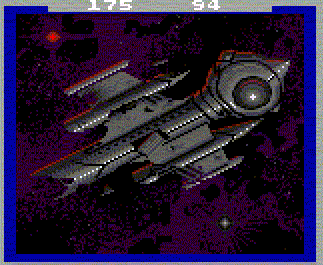 Space
travel is really what gives this game it's feeling of open-endedness.
You're given a huge galaxy filled with star systems in any direction which you
wish to travel. Patterns of stars are kept distinctive with a smattering
of nebulas and observable constellations. Don't know where to go?
Head off in any direction and you will encounter areas of influence of a
particular race, and will meet ships at random in hyperspace or in the
surrounding solar systems. Most alien races will give you a chance to use
diplomacy, but a few prefer to talk only with their weapons. One alien
race in particular will wipe you out faster than you can ever possibly respond,
with weapons far beyond anything you can ever obtain yourself. Among those
who will respond to hails, many will respond best to a friendly posture, some
have to be approached obsequiously, and others you literally have to beat the
information out of them. Space
travel is really what gives this game it's feeling of open-endedness.
You're given a huge galaxy filled with star systems in any direction which you
wish to travel. Patterns of stars are kept distinctive with a smattering
of nebulas and observable constellations. Don't know where to go?
Head off in any direction and you will encounter areas of influence of a
particular race, and will meet ships at random in hyperspace or in the
surrounding solar systems. Most alien races will give you a chance to use
diplomacy, but a few prefer to talk only with their weapons. One alien
race in particular will wipe you out faster than you can ever possibly respond,
with weapons far beyond anything you can ever obtain yourself. Among those
who will respond to hails, many will respond best to a friendly posture, some
have to be approached obsequiously, and others you literally have to beat the
information out of them.
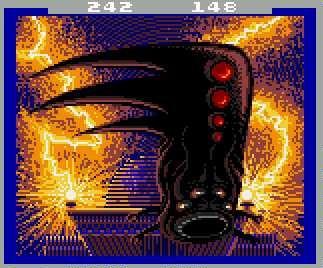 Unlike
many games before and since, the answers are not simply handed to you.
Different philosophies of thought among alien races are very well portrayed and
you will have to sort through many distortions, outright lies, and half-truths
in order to figure out the truth and meaning behind events. Tips and hints
concerning important locations are handed out piecemeal, so writing down notes
and combining hints is a necessity. Unlike
many games before and since, the answers are not simply handed to you.
Different philosophies of thought among alien races are very well portrayed and
you will have to sort through many distortions, outright lies, and half-truths
in order to figure out the truth and meaning behind events. Tips and hints
concerning important locations are handed out piecemeal, so writing down notes
and combining hints is a necessity.
 Unlike
other archaic DOS-based games of the time, you do not have to memorize a huge
number of keys since all functions can be executed by using convenient menus
controlled by the keypad. All events occur in pauseable real-time, events
such as ship combat, lifeforms moving or attacking, or even just time passing
only takes place when you are outside of a menu, giving players the ability to
think before they act and removing the stress of figuring out controls under
pressure. Unlike
other archaic DOS-based games of the time, you do not have to memorize a huge
number of keys since all functions can be executed by using convenient menus
controlled by the keypad. All events occur in pauseable real-time, events
such as ship combat, lifeforms moving or attacking, or even just time passing
only takes place when you are outside of a menu, giving players the ability to
think before they act and removing the stress of figuring out controls under
pressure. 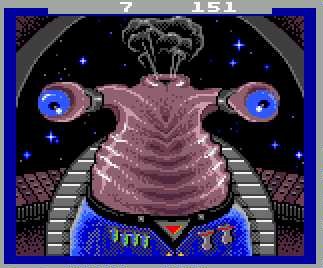 The
greatest weak point of the game today was actually its greatest strength at the
time the game was released. An entire universe was hours upon hours of
gameplay was compressed down far enough to fit onto two 360K floppy disks.
The standard configuration of the IBM-PC at that time did not include a hard
disk, and the huge amount of state data required to be saved create a serious
problem until the designers decided to actively modify the actual game data
itself as the game is played, incorporating program code, game data tables, and
state game data together with little delineation between them. The
greatest weak point of the game today was actually its greatest strength at the
time the game was released. An entire universe was hours upon hours of
gameplay was compressed down far enough to fit onto two 360K floppy disks.
The standard configuration of the IBM-PC at that time did not include a hard
disk, and the huge amount of state data required to be saved create a serious
problem until the designers decided to actively modify the actual game data
itself as the game is played, incorporating program code, game data tables, and
state game data together with little delineation between them.
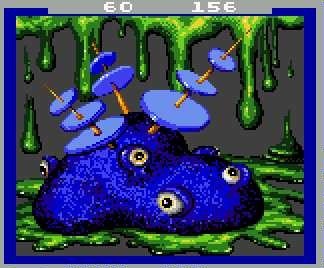 This
allowed players to simply make backup copies of the original game data and play
their same game on a new set of two discs, instead of having to juggle a third
or even a fourth floppy disk while playing. This had the effect of keeping
the originals untouched, in the age where floppy disks frequently went bad, and
made it easier for those was just one floppy disk drive to swap disks. The
executable code of Starflight took very little system memory so any extra
memory was used as a cache for saving changes that were to be written on the disk
to minimize disk swapping. Again the downside of this is that if the game
was closed and not "saved", the process of writing all of these buffered changes back
to the hard copies of the program, the game became corrupt and
unplayable. All of these problems are resolved by using the front-end
system available on this site. This
allowed players to simply make backup copies of the original game data and play
their same game on a new set of two discs, instead of having to juggle a third
or even a fourth floppy disk while playing. This had the effect of keeping
the originals untouched, in the age where floppy disks frequently went bad, and
made it easier for those was just one floppy disk drive to swap disks. The
executable code of Starflight took very little system memory so any extra
memory was used as a cache for saving changes that were to be written on the disk
to minimize disk swapping. Again the downside of this is that if the game
was closed and not "saved", the process of writing all of these buffered changes back
to the hard copies of the program, the game became corrupt and
unplayable. All of these problems are resolved by using the front-end
system available on this site.
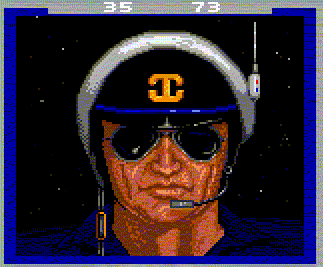 Starflight
I and II were produced during the age of heavy and obtrusive copy
protection. Starflight I uses a code wheel style verification system
where you're prompted to enter a value based on three code words given to you by
starport when you choose to launch. Now that the game is considered
abandonware, you can look up this code using
the simple code chart found on this site, or
you can use a stand-alone Windows
"Code Wheel" program to look up values. (64-bit version) Starflight
I and II were produced during the age of heavy and obtrusive copy
protection. Starflight I uses a code wheel style verification system
where you're prompted to enter a value based on three code words given to you by
starport when you choose to launch. Now that the game is considered
abandonware, you can look up this code using
the simple code chart found on this site, or
you can use a stand-alone Windows
"Code Wheel" program to look up values. (64-bit version)
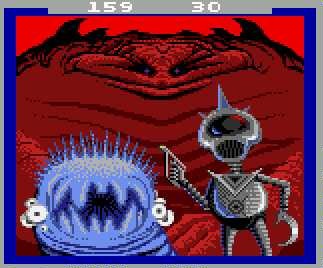 If
you enter an incorrect code into the game, it is nice enough to tell you this
and give you a second chance. If you insist on using the wrong code, in
six days time (game time) the space police will be sent out to give you yet a
third chance to enter the correct code and to blow up your ship if you continue
to choose poorly. The copy of Starflight II on this site uses a similar
method of asking for the number and color of stars on a star chart, however you
may enter a value you wish without repercussions, as this copy protection method
has been "fixed." If
you enter an incorrect code into the game, it is nice enough to tell you this
and give you a second chance. If you insist on using the wrong code, in
six days time (game time) the space police will be sent out to give you yet a
third chance to enter the correct code and to blow up your ship if you continue
to choose poorly. The copy of Starflight II on this site uses a similar
method of asking for the number and color of stars on a star chart, however you
may enter a value you wish without repercussions, as this copy protection method
has been "fixed."
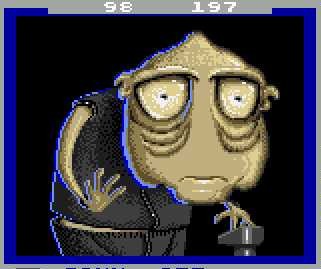 A
few mods of the game have been made, primarily designed to enhance
gameplay. All seven of these mods of the PC version are available in a
simple downloadable package which includes DOSbox, an open-source DOS emulator
which resolves speed and graphics problems on modern computers. Most of
the mods are fairly simple, such as giving the player huge starting cash,
eliminating all nebulas, or jamming all-important star systems next to each
other. The SF1
Universe mod however attempts to change about everything possible.
The support page listing all the features of this mod can
be found here. A
few mods of the game have been made, primarily designed to enhance
gameplay. All seven of these mods of the PC version are available in a
simple downloadable package which includes DOSbox, an open-source DOS emulator
which resolves speed and graphics problems on modern computers. Most of
the mods are fairly simple, such as giving the player huge starting cash,
eliminating all nebulas, or jamming all-important star systems next to each
other. The SF1
Universe mod however attempts to change about everything possible.
The support page listing all the features of this mod can
be found here.
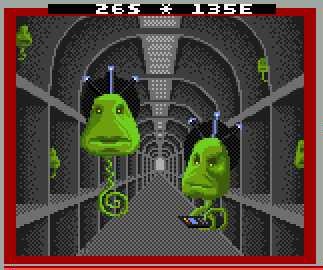 About
8 years ago a group of fans with the blessings of the original developers
created the Starflight 3 project, an attempt to continue the epic series with an
entirely volunteer group of programmers, artists and musicians. Bogged
down by the sheer complexity of the game and previously by a lack of
understanding of the previous game mechanics, the project continued to burn out
contributors and discard code until the present day. Still
short staffed, but now using a modern game engine and a clear direction and game
design, the volunteers hope to faithfully re-create the Starflight universe
including the old two sectors from the previous games and all of the old races
in their entirety. About
8 years ago a group of fans with the blessings of the original developers
created the Starflight 3 project, an attempt to continue the epic series with an
entirely volunteer group of programmers, artists and musicians. Bogged
down by the sheer complexity of the game and previously by a lack of
understanding of the previous game mechanics, the project continued to burn out
contributors and discard code until the present day. Still
short staffed, but now using a modern game engine and a clear direction and game
design, the volunteers hope to faithfully re-create the Starflight universe
including the old two sectors from the previous games and all of the old races
in their entirety.
Continue on to the resource
and download pages.
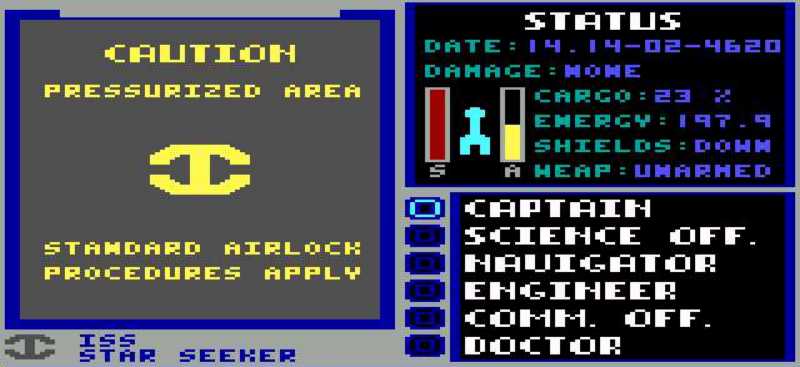
|

